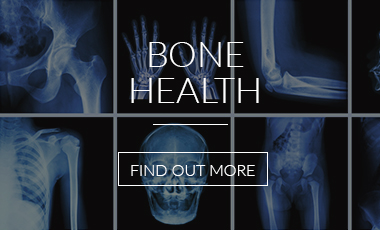Arthritis is a term that many find unnecessarily threatening. The term simply means damage or disease in a joint. There are several types of arthritis, and all can be managed very effectively if diagnosed early. A proactive approach is vital.
There are over 200 types of arthritis, and we broadly classify these into two groups: Osteoarthritis, and classical inflammatory types of arthritis. This is not an ideal classification, since inflammation also occurs in osteoarthritis!
Making a diagnosis in any patient requires careful clinical assessment, use of investigative tools such as diagnostic ultrasound, MRI, X-ray or CT, blood tests, and others.
Osteoporosis
Osteoarthritis is the most common type of arthritis. It occurs because of thinning of the cartilage cushion of the joint. As a result the bone underneath responds in an attempt to repair the joint. This is why extra bone forms, and why people grow ‘bumps’ for example on their fingers.
The reasons why people get arthritis range from genetics to other diseases to excess body weight. Abnormal mechanical stresses on the joint(s) – for example after an injury to a joint in younger life – can also lead on to osteoarthritis. This is why rapid evaluation and management of sports injuries is very important.
Some people are born with slightly abnormal joint shape that can also predispose them to osteoarthritis.
Osteoarthritis is diagnosed by careful clinical evaluation. X-rays in the early stages are usually normal. MRI scans and newer imaging technologies allow greater insights into changes within joints and can be very useful in early arthritis.
Inflammatory Arthritis
This involves inflammation of the joint lining (synovium). This can damage the surface of the joint and the underlying bone itself. Usually many joints are affected. Rheumatoid arthritis is an example, but there are many other forms of inflammatory arthritis, including:
- Gout and Pseudogout (an arthritis like gout but with different crystals involved)
- Ankylosing spondylitis
- Reative arthritis
- Arthritis associated with colitis or psoriasis
- Less common disorders that can affect many parts of the body – the connective tissue diseases. An example is Systemic lupus erthematosus (SLE)
Because there are a variety of types of arthritis, it is important that the correct diagnosis is reached to ensure that treatment is effective.
Rheumatoid arthritis
Rheumatoid arthritis is a type of arthritis that many are familiar with, and which is a relatively common type of arthritis in the UK. It is an autoimmune disease that results in pain and inflammation of joints, and marked stiffness.
Recent drug developments have revolutionized the management of rheumatoid arthritis and other inflammatory arthritides.
Gout
Gout is a common form of inflammatory arthritis that occurs due to too much uric acid being present in the bloodstream, which the deposits in the joints. Too much uric acid in the blood can be due to genetics, drugs, disease or lifestyle.
Psoraitic arthritis
Psoriatic arthritis is a condition involving pain and inflammation in and around the joints. It is linked to a scaly skin condition called psoriasis, but the skin condition is not always present.
There are a number of treatments available for psoriatic arthritis. Sometimes it can go undiagnosed for some time, as it is not as obvious as other conditions such as rheumatoid arthritis.
Treatments for arthritis
Many people think that when they are diagnosed with osteoarthritis, they are doomed to lifelong pain and disability. This is untrue. Many therapeutic options are available (see below), and your lifestyle can continue to include many sporting activities. Most will benefit from a therapeutic exercise prescription. Seek help EARLY.
There are many treatments for arthritis. The choice of treatments is strongly influenced by the form of arthritis, and should be customised to the patient.
Approaches include:
- Customised exercise
- Assisted weight management
- Nutritional modifications
- Supplements
- Medications to influence the arthritic process
- Biomechanical adaptations
- Injection therapies
- Surgery







